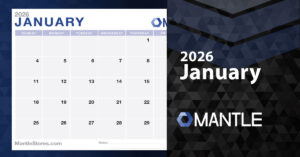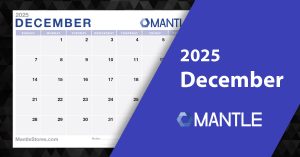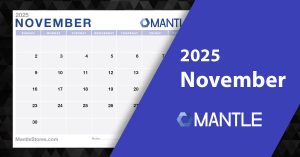Exploring Customer Data
In the realm of most retail, understanding your customers is not just about recognizing faces; it’s about comprehending their preferences,knowing their habits and needs. Customer data encompasses various aspects such as demographic information (age, gender, location), purchasing history, preferences, and even feedback. This information is a treasure trove for any business, offering deep insights into who your customers are and what they seek from your store.
The Why: Crafting a Customer-Centric Approach
The importance of customer data in a retail environment, especially in a niche like gaming, cannot be overstated. This data is the guiding star for tailoring your services and products to meet the unique demands of your customer base. Understanding customer preferences helps in creating a personalized shopping experience, which is crucial for customer loyalty and repeat business. Moreover, it aids in identifying potential new markets and customer segments. Looking at your location, the seasonal appeal of your location, and the foot traffic your business has also affects how you market, how you approach sales, and how you will approach keeping your customers coming again and again.
Actionable Insights
Personalized Recommendations: Use purchase history and preferences to recommend products to customers. For instance, if a customer frequently buys strategy games, inform them about new arrivals in strategy games. Knowing you have a new customer who plays Pokémon, you will want to inform them of your weekly Pokémon League, new release, or upcoming special event.
Marketing Personalization: Tailor your marketing campaigns based on customer data. Segmented email campaigns, for example, can target different customer groups with offers and products relevant to their interests. Online marketing makes this slightly easier, as you can look at your customers’ purchase history easily. With a fully integrated in store point of sale system, like Mantle, you’ll be able to easily identify these customers as well. This lets you market directly to customers who want the specific products you are offering, hopefully building a repeat customer.
Product Range Optimization: Align your inventory with the preferences of your customer base. If data shows a high demand for Yu-Gi-Oh over miniature war games, bring more Yu-Gi-Oh games in. If your customers tend to buy more Yu-Gi-Oh over miniature war games, you’ll be able to see that data and build a better order with your distributors pre-orders to be able to make sure you are maximizing your profit potential. You’ll also be able to experiment with games that are competing in the same space and genre. Games such as One Piece or Lorcana may be a close enough genre for your Yu-Gi-Oh players to play with. Just be careful to not cannibalize your own customer base, one for another. The end goal would be to bring additional players into both.
Feedback Loop: Utilize customer feedback for continuous improvement. This can be about the product range, store environment, or customer service. Implementing feedback shows customers that their opinions are listened to and acted upon. The feedback can also help your staff. By getting customer feedback, you may learn about an outstanding staff member going above and beyond. Reward that staff member! You may also learn that a policy you put into place is actually hurting the customer base and reducing the amount of times that customer visits your store, thus spending less overall with you.
Store Layout and Design: Look at shopping patterns to optimize your store layout. For example, place the most popular items in easily accessible areas or use data to design your store layout. Moving items in your store may increase sales of that specific product. You may also look at lighting and focus spotlights to highlight a specific item. People tend to look directly at the items that are lit up brighter due to lighting. You will also want to look at the actual foot traffic of your store. Take a day and physically count the amount of people who walk past your store. How many people enter your store. How many enter and make a purchase. Including times of day will help you as well. It will help you understand the natural foot traffic of your store and how busy a random new customer is entering your store. This may be a tourist visiting you for the first and maybe last time ever. It may be a local resident that has never heard of you before. Knowing and understanding when and how people walk into your store then interact with your shelving and merchandising will help you build better product displays. I recommend reading Why We Buy by Paco Underhill for more.
Marketing Personalization: Tailor your marketing campaigns based on customer data. Segmented email campaigns, for example, can target different customer groups with offers and products relevant to their interests. Online marketing makes this slightly easier, as you can look at your customers’ purchase history easily. With a fully integrated in store point of sale system like Mantle, you’ll be able to easily identify these customers as well. This lets you market directly to customers who want the specific products you are offering, hopefully building a repeat customer.
Product Range Optimization: Align your inventory with the preferences of your customer base. If data shows a high demand for console games over PC games, bring more console games in. If your customers tend to buy more Yu-Gi-Oh over Lorcana, you’ll be able to see that data and build a better order with your distributors pre-orders to be able to make sure you are maximizing your profit potential.
Feedback Loop: Utilize customer feedback for continuous improvement. This can be about the product range, store environment, or customer service. Implementing feedback shows customers that their opinions are listened to and acted upon. The feedback can also help your staff. By getting customer feedback, you may learn about an outstanding staff member going above and beyond. Reward that staff member! You may also learn that a policy you put into place is actually hurting the customer base and reducing the amount of times that customer visits your store.
Store Layout and Design: Look at shopping patterns to optimize your store layout. For example, place the most popular items in easily accessible areas or use data to design your store layout. Moving items in your store may increase sales of that specific product. You may also look at lighting and focus spotlights to highlight a specific item. People tend to look directly at the items that are lit up brighter due to lighting.
Understanding the Customer Lifecycle: Recognize where each customer is in their buying journey. Are they new to gaming or seasoned experts? Looking at your customers based on this lifecycle can enhance customer experience and loyalty. Customers across all retail tend to have a life cycle. Awareness, Consideration, Purchaser, Retention, Loyal, and Fanatic. There are other names, but this list is the most common among retail data.
Conclusion
In essence, customer data serves as the roadmap to creating a custom experience for each individual who walks into your business. It’s about going beyond the transactional relationship and fostering a deeper connection with your customers. By leveraging your customers effectively, you not only boost sales but also build a community of loyal fanatical customers who feel valued and understood. In game store retailing, such personalized customer engagement is the key differentiator that can set your store apart.






